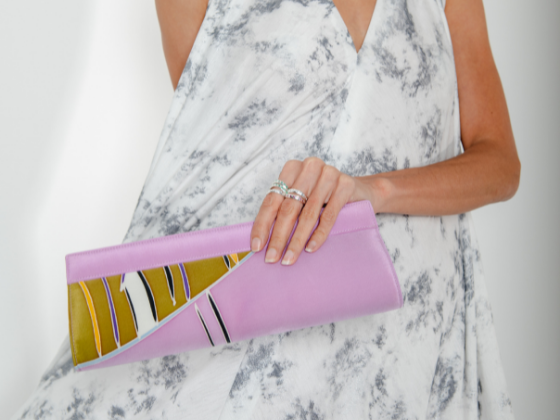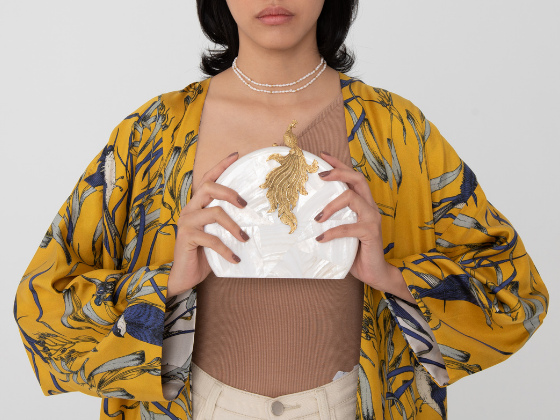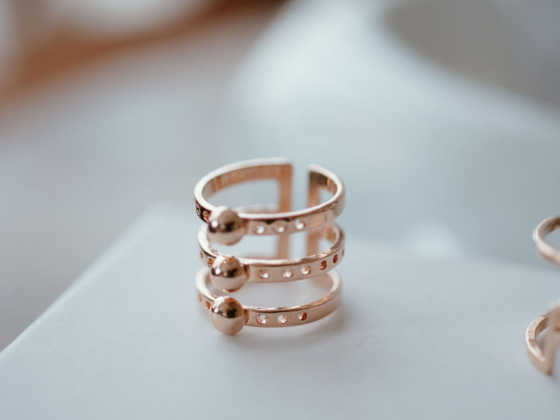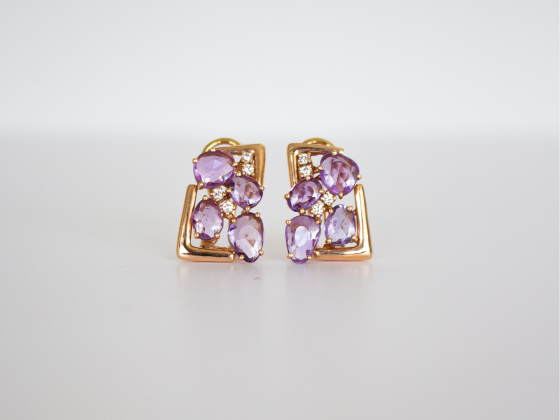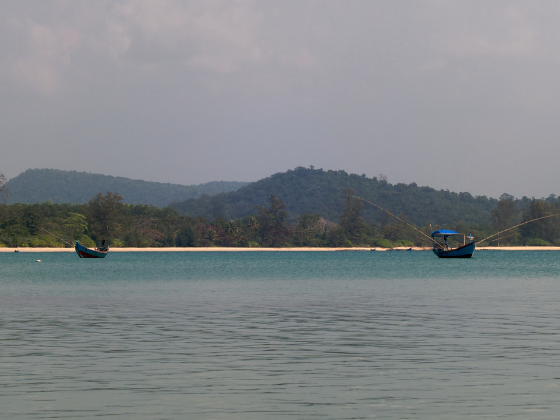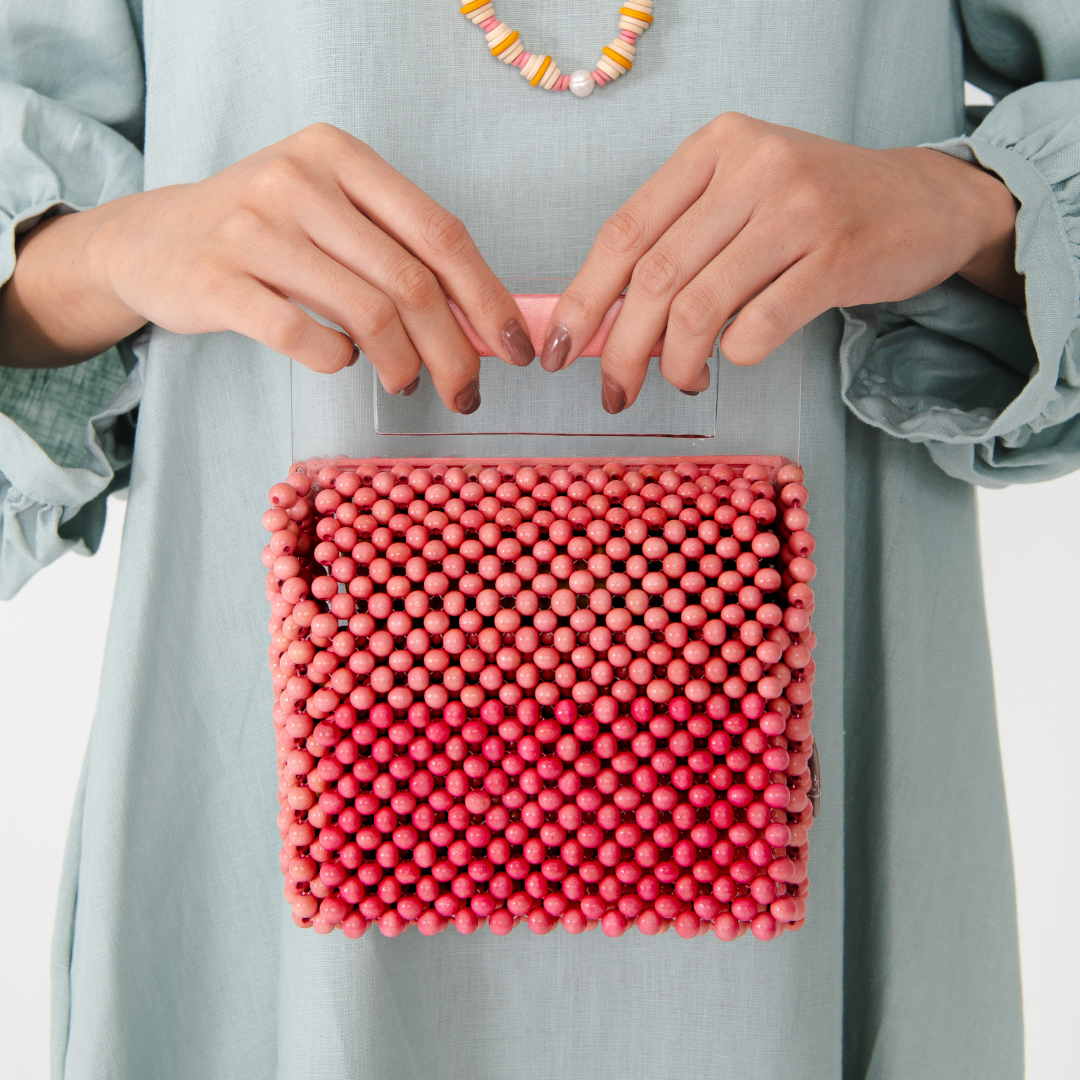By Aisha Hassan on December 7th, 2021
Back to the future
With its futuristic tailoring and emphasis on durable materials, Kelvin Morales’ Hazard Blue collection envisions a (not too distant) dystopia where toxic waste reigns supreme. With pieces that feature embroidered plastic bottles, or are crafted from water-repellent fabric, Kelvin’s work signifies that our clothes must not only protect us from an unstable environment, but that we must also be conscious of the forces — like pollution — that compromised the environment in the first place.
“At the start of the pandemic in the Philippines, it was really hard to adjust,” Kelvin says. “I realized everything is impacted by our careless actions when it comes to the virus and the environment, so [this collection] was a way to bring awareness to people because it’s more visual.”
As a designer, Kelvin uses his eponymous label to explore different artistic narratives, which often grow into social commentary. After he graduated from De La Salle-College of Saint Benilde in 2018, for instance, he launched a ready-to-wear collection called Penetration that investigated how Filipino culture was fading. Kelvin explains that delving into these gloomy issues, like climate catastrophe or dwindling heritage, can affect his emotions and absorb much of his energy. But they are, after all, difficult truths.
“I want to represent how we can also make clothes from dark inspirations,” Kelvin says. “It’s setting a different mood.”
The shape of you
Kelvin Morales pieces often have peculiar shapes or striking silhouettes. “I’m fascinated with different forms that accentuate our body structures,” Kelvin says. He explains that this hearkens back to when he and his brother were children and were interested in paper dolls and cut outs of women dressing up. They soon started making sketches of their own, and their grandfather, who was an architect, would critique their work. Kelvin remains deeply thoughtful about designing for the human shape today.
“My brand is more focused on genderless silhouettes...and we like to make our textiles technically easy to wear, for everyone,” Kelvin says. It’s difficult to find artisans who can master this level of expertise, he explains, which is why he has a small but specialized team. “I have two embroiderers and three sewers, and they are craftsmen that focus on tailoring,” Kelvin says. It took over nine months for them to create Hazard Blue, especially with how labor-intensive fabric production was, but that’s what gives the pieces longevity.
A material world
“If you want to sell something or offer something very special, you need to focus on craftsmanship for your consumers,” Kelvin says. And you can see this in his clothes: All the embroidery is manually hand-guided (“It’s like using a machine as a brush to create paintings”), there are shirts made out of handwoven silk cocoons, and certain tie-dying processes can take up to one week alone.
The fabrication is also paramount to the collection’s ethos. “[Hazard Blue] is focused on futurewear, so we wanted to use materials that also protect us,” Kelvin says. Some pieces use polyamide, a light water-repellent material that’s easy to clean and dry, while others employ polycotton, a mix of polyester and cotton that doesn’t wrinkle. “It’s very functional...and I think our future of fashion is focused on protective material,” Kelvin says. “With synthetic materials it really depends on how you use and consume it, and these pieces are made to last.”
As for his own future in fashion and design, Kelvin is planning to release a home accessories and art collection, full of candle sets and sculptures, as well as a womenswear collection too. “I am really excited,” Kelvin says. “I want to make it perfect.”
ABOUT THE AUTHOR
Aisha Hassan is a writer, journalist, and co-founder of Dia. Previously, Aisha worked for Quartz in New York and Harper’s Bazaar in Malaysia. Her fiction has been published in international literary magazines. She has a bachelor’s degree in English Language & Literature from the University of Oxford, and a master’s degree from Columbia’s Graduate School of Journalism.

